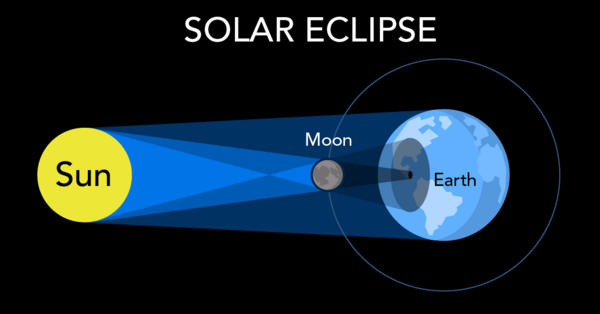The Big Bang Theory. You must be very much familiar with this most amazing sitcom where Sheldon and Leonard discuss the mysteries of the universe in a funny and quirky manner. Think like this, while lying under the blanket of uncountable stars, this question must have surely crossed your mind, how did this universe come into existence? What if we told you that everything originated from a single cosmic explosion, including the planets, stars, and you? Sounds interesting right? So grab your favorite munchies, take a seat, and let’s investigate the origin of our Universe. Yes, we’re going back in time, into the enthralling journey of the Big Bang!
What exactly is the Big Bang?
Have you ever pondered where these twinkling stars, planets, galaxies, and not to forget even – we humans come from? The answer lies in the mind-blowing theory of the Big Bang! Let’s understand in simpler terms. Imagine our present universe as a giant balloon. Back in time nearly 13.8 billion years ago, this balloon was extremely tiny, hot, and densely packed with energy and matter, and at some point, it began expanding astonishingly. Which marked the birth of our universe. This is the Big Bang- the cosmic expansion of space!
But hold on! So, this implies that the Big Bang is not an explosion in space, but it’s the expansion of space itself.
What Happened During the Big Bang?
The origin of our universe – the Big Bang didn’t just happen with a single event but in a series of crucial events. Let’s know more about these from the beginning. Starting with,
The Planck Era:
One of the most enigmatic and intriguing eras in the universe’s history is the Planck era. It all starts from here, in the smallest possible fraction of a second, We are discussing the astounding 10-43 seconds. With a temperature of over 1032 Kelvin, the universe as we know it now was compressed into an unimaginably tiny and exceedingly hot space. Just imagine it like hot boiling soup. Things became rather crazy at this point! The strong nuclear force, weak nuclear force, gravity, and electromagnetic force the four fundamental forces of nature were unified into a single super force causing the cosmos to defy established laws of quantum physics.
The Grand Unification Era:
During the first 10-43 to 10-36 seconds following the Big Bang, the cosmos was a thick, hot soup with a temperature of around 1029 Kelvin. Gravity had already split apart in the Planck era when the cosmos cooled down. The really interesting part is that strong nuclear, weak nuclear, and electromagnetic forces, three of the four basic forces were just one force. The big split took place here! The strong nuclear force was now beginning to split off from the electromagnetic and weak forces. This is something that intrigued Scientists to search for a hypothesis “The Theory of Everything” that would bring these forces together once more.
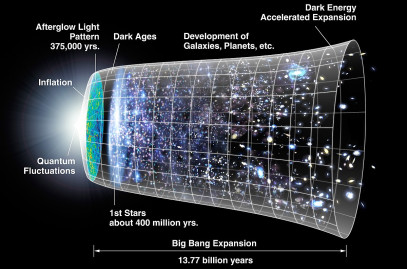
The Inflationary Era:
Have you ever wondered how the universe expanded so rapidly following the Big Bang?
There was a period when the universe grew at an astonishing rate, shaping the cosmos we live in today, called the inflationary epoch. This occurred between 10-36 to 10-32 seconds just after the Big Bang. You can compare this to a balloon the size of an atom expanding astonishingly to the size of a Galaxy! The universe expanded dramatically, surpassing the speed of light, during this period. It is thought that a high-energy field known as the inflation field is the source of this rapid growth. By flattening the cosmic wobble this inflation field marked the beginning of uniformity in space.
The Electroweak Era:
The electroweak epoch was spectacular right after the Big Bang, which caused the universe to burst into existence. This somewhere overlaps with the inflationary era, between around 10-36 and 10-12 Seconds after the Big Bang, two of the four fundamental forces, the weak nuclear force, which controls processes such as radioactive decay, and the electromagnetic force, which produces light and attracts charged particles, united during this intriguing electroweak period. It’s similar to blending two different tastes to get a single, unique flavor.
But wait, how did this unification happen?
Well, it all comes down to something called spontaneous symmetry breaking. Consider separating those two tastes as much as possible to give each a distinct flavor and lose their symmetry. That was the electroweak period. Towards the end of this era, the separation of weak nuclear force and the electromagnetic force finally occurred. Particle-antiparticle pairs could form spontaneously during the electroweak epoch due to the universe’s intense energy level.
Quarks, leptons, and gauge bosons, the fundamental constituents of matter, were among these particles. These particles interact in ways that are hard for us to comprehend at this time. They demonstrated the unification of electromagnetism and the weak force by acting as though they were under the control of a single force. Sounds very interesting right?
The Quark Era:
The universe was composed of a heavy, steaming soup of particles, around 1012 kelvin during the Quark Era, which lasted between 10-12 and 10-6 seconds just after the Big Bang. All the fundamental forces were separated during this era which marked the shaping of the universe we observed today. The universe was filled with a primordial plasma of quarks and gluons, with protons and neutrons not yet formed.
You may be wondering now, what are quarks? Quarks are the building blocks that form the atomic nuclei of these basic fundamental particles such as protons and neutrons. The strong nuclear force influenced quarks’ interactions with one another as they moved around freely during the Quark Epoch. Quarks started to bond together, generating composite particles known as hadrons, as the cosmos expanded and cooled. This process was known as hadronization where the three quarks combine to form a proton or neutron.
The Particle Era:
Hadron Epoch:
After the quark era, the universe was filled with an ocean of quarks and antiquarks, which marked the beginning of the Hadron and Lepton era which lasted up to 10-6 to 1 second after the Big Bang. As the universe expanded and cooled down, these quarks and antiquarks started to annihilate each other, leaving some of the quarks behind because of slight asymmetry between the particle numbers. The only particles left were the quarks. This is where the strong nuclear force dominates, the quarks combine to form protons and neutrons technically known as hadrons. You must believe that this happened just 1 second after the Big Bang!
Lepton Epoch:
Just after a second of the Hadron Epoch, the universe entered into the Lepton epoch and this lasted around 10 seconds after the Big Bang. Leptons, which comprise particles like electrons, neutrinos, and their antiparticles, dominated the cosmos throughout this time. The weak nuclear force, which controls reactions like beta decay, dominated the fundamental interactions between particles. Leptons and antileptons annihilated each other as the universe stretched and cooled, leaving just a little surplus of leptons (electrons). This surplus of leptons had a significant impact on the recombination and production of light elements and shaped the universe we see today.
The Photon Epoch:
The universe was dominated by photons, called light particles, between 109seconds and 380,000 years after the Big Bang. At this period, the universe was extremely hot and dense, as the universe expanded further, the temperature gradually decreased from around 1019 Kelvin to approximately 3000 Kelvin. Photons were constantly bouncing about and interacting with other particles, such as nuclei and electrons. Picture that, right after the Big Bang, the universe looked like a huge disco ball, flashing photons everywhere that illuminated the surrounding universe.
Now let’s get a little technical here. The universe underwent recombination, an extremely important transformation, during the Photon Epoch. This is the moment when protons and electrons merge to produce neutral hydrogen atoms, allowing photons to see through the cosmos. These photons were released into space, producing the faint glow that scientists now recognize as the Cosmic Microwave Background (CMB) radiation, which offers important hints about the early universe.
Ever notice how straightforward the Big Bang seems? Well, it’s not as simple as you may think.
It was shortly after this that the universe as we know it now began to evolve at an increasing rate. But what happened following this significant event? How did the universe get from being a blazing cauldron of fundamental particles to the cosmos filled with stars we see today? Let’s know something more about it.
How Did the Universe Evolve After the Big Bang?
Formation of Atoms and the First Stars:
The cosmos was extremely hot and dense just after the Big Bang. It was mostly composed of elementary particles such as protons, neutrons, and electrons for nearly 380,000 years after the Big Bang. The first atoms, mostly hydrogen, its isotopes, and traces of helium, were formed as these particles interacted and combined as the cosmos cooled and expanded. This was known as the Dark Ages because these early atoms did not generate light.
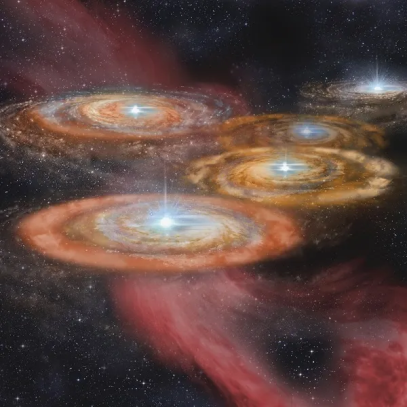
Credits: Shantanu Basu, University of West Virginia. (Formation of First Stars)
So with the presence of swirling hydrogen atoms did the stars begin forming instantly? The answer is NO!
It took nearly 100 million years for the first stars to be born in the universe after the Big Bang. That’s a long period. Until then gravity started dominating the universe. It began to clump the atoms of hydrogen together to form a dense cloud. The first stars, the luminous pioneers of the cosmos, were born when these clouds became denser and their internal pressure increased. These early stars were unlike anything we see in the night sky now. They were massive in size and extremely hot. Made up almost entirely of hydrogen and helium, the fundamental building ingredients of the universe, they were actual Big Bang infants.
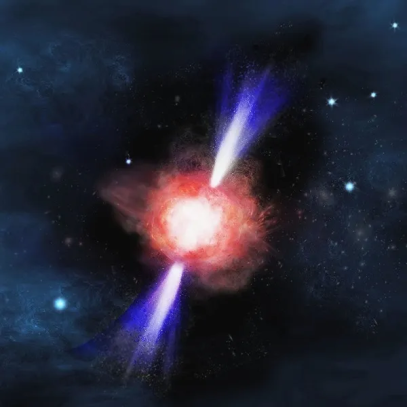
Credits: Kavli IPMU (Population III stars)
These stars, which are often referred to as “Population III” stars, shone with an intensity that was unfathomable and had several times the mass of our sun. As nuclear fusion started dominating heavier elements such as carbon, oxygen, and iron formed leading to stellar death – the supernova explosion, seeding the universe with the heavy elements, raw materials necessary for the formation of planets, moons, and life itself.
Formation of Galaxies and Large-Scale Structures:
The initial stars began to develop and undergo reionization, paving the path for the initial galaxies to emerge after the Big Bang. Hierarchical clustering is one of the main processes behind the development of galaxies. Small structures first developed throughout this process, and they eventually combined to form bigger ones. Protogalaxies were originally formed by a combination of stars and star clusters, and they grew and merged throughout time. Swirling discs of gas and stars were created as the gas cooled and condensed under the influence of gravity.
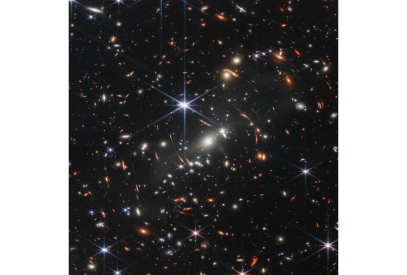
Credit: NASA/ESA, CSA, and STScI (JWST’s image of Galaxy cluster SMACS 0723)
Our Milky Way and other spiral galaxies are descended from these revolving discs. With a span of billions of years, gas may continue to produce new stars in these discs where it settled due to cooling. After a sequence of mergers and interactions, galaxies developed and evolved throughout the universe’s aging, but they were probably tiny and irregular in shape at first. The intricate geometries of spirals, ellipticals, and irregular galaxies that we observe today are the result of these interactions.
Recently, NASA’s James Webb Space Telescope (JWST) provided the deepest and sharpest infrared image of the distant universe so far. Webb’s First Deep Field focused on one of the oldest galaxy clusters SMACS 0723, near the constellation of Volans in the southern sky, which formed after the Big Bang, nearly 4.6 billion years ago. Isn’t it incredible!
The Evidence Supporting the Big Bang Theory.
How do scientists know all of this, you might wonder? Superb query! Several important pieces of evidence that provide a convincing picture of the early universe provide support for idea of the Big Bang.
1. The Cosmic Microwave Background (CMB):
The Cosmic Microwave Background (CMB), a faint radiation glow that surrounds the universe, is one of the most compelling pieces of evidence for the Big Bang theory. In the middle of the 20th century, theoretical predictions gave rise to the idea of the CMB. But it wasn’t until 1965 while working with a radio antenna at Bell Labs that Arno Penzias and Robert Wilson unintentionally discovered this radiation. They heard a continuous sound coming from the sky that appeared to be coming from all directions and had no connection to any recognized source. This was the Cosmic Microwave Background.
In essence, the Cosmic Microwave Background is the thermal radiation that remains from the recombination period, which occurred around 380,000 years following the Big Bang. The temperature of the CMB is around 2.725 Kelvin, or -270.425 degrees Celsius, and is surprisingly uniform. It does, however, have minute temperature changes known as anisotropies.
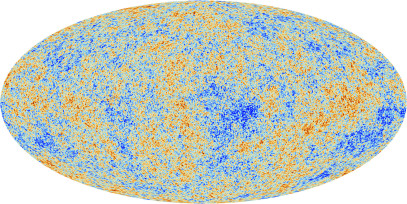
Credits: ESA and the Planck Collaboration (CMB Radiation)
Numerous space missions, such as the COBE (Cosmic Background Explorer), WMAP (Wilkinson Microwave Anisotropy Probe), and Planck spacecraft, have produced detailed studies of the CMB. Stating that, the CMB’s minute temperature changes (about one part in 100,000) suggests that the early universe involved minuscule density fluctuations. Galaxies and other large-scale structures were formed from these fluctuations.
Strong evidence for the flatness of the universe is provided by the CMB data. This supports the inflationary model of the early cosmos, which postulates a fast exponential expansion right after the Big Bang. Detailed analysis of CMB also supported the presence of additional components in the universe i.e. dark energy (around 68%), dark matter makes up 27%, and ordinary matter makes up only 5%.
2. Redshift of Galaxies:
Assume that you are at a train station and that a train is approaching because you hear its whistle. The whistle’s pitch increases as the train approaches and decreases as it travels away. It is also true for light, and it is called the Doppler effect.
Light is bluened (blueshifted) when it approaches us because the light waves are squeezed. As the light source goes away, on the other hand, its light waves are stretched, making the light look redder (redshift). Edwin Hubble made a revolutionary discovery when he saw that most galaxies’ light was redshifted, indicating that they were traveling away from us. This finding implied that the universe was expanding rather than static as previously thought. This significantly supported the Big Bang hypothesis.
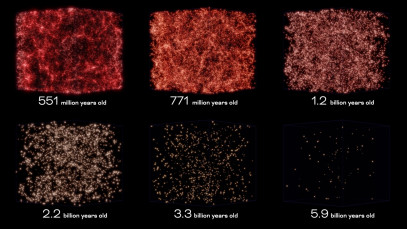
Credit: NASA’s Goddard Space Flight Center/F. Reddy and Z. Zhai, Y. Wang (IPAC) and A. Benson (Carnegie Observatories)
Looking at the figure above, you can see how galaxies have clustered together at different cosmic sizes up to the present day when the universe first began to form following the Big Bang. Each cube is 100 million light-years across. Over time, the universe’s expansion rapidly reduces the galaxy’s density. A cosmic redshift can be seen on each cube dispersing the clusters separated by the void in the universe. Isn’t it so interesting?
If you want to see an interactive simulation then click here.
It seems as though we are peering back in time when we study faraway galaxies. Thousands or possibly billions of years have passed before the light from these galaxies reaches Earth. Consequently, the light that we currently see depicts these galaxies in their distant past after the Big Bang.
The Hypothetical Future of the Universe.
As the Big Bang marked the beginning of the universe, you must have also wondered, what would be the ultimate fate of our universe. Will the universe continue to expand, or will human civilization come to an end? Such intriguing questions have always raised a sense of curiosity. Let’s have a look at some hypothetical conclusions.
The Big Freeze:
The Big Freeze is the most commonly accepted theory on the future of the universe. Galaxies will keep separating from one another and the distances between them will continue to grow larger as the universe expands. The gas required to create new stars will run out over billions of years, and no new stars will form. As the universe expands, existing stars will run out of nuclear fuel and die, leaving behind white dwarfs, neutron stars, and black holes. The cosmos will ultimately chill entirely, approaching absolute zero in temperature.
But this might not be the ultimate fate of our universe, there are some other supporting conclusions as well.
The Big Crunch:
Big Crunch as it sounds will be the most dramatic reversal cycle of our universe. Imagine our universe started from a Big Bang and reversed back to the same stage again. Intriguing right? Galaxies have begun to drift apart as a consequence of the universe’s expansion. But this expansion may be slowed down and finally come to an end if the gravitational pull of all the matter in the universe is sufficiently strong.
Galaxies, stars, and everything else would be drawn back towards a central point as soon as the expansion stops. The expansion that occurred after the Big Bang would be mirrored by this contraction. The cosmos would get denser and hotter as it contracts. Interactions between stars and galaxies would produce a frantic and turbulent environment. In the end, the universe could collapse into a very hot and dense state, perhaps generating a singularity similar to the one that existed at the time of the Big Bang.
The Big Rip:
Imagine everything to be torn apart in the universe. Big Rip hypothetically would be the most catastrophic and dreadful end of the universe. The idea of Big Rig begins with the most mysterious entity of our universe which is the Dark Matter, which is also the reason for the expansion of our universe after the Big Bang.
The galaxies themselves will be ripped apart by the rapid expansion. That would be a few billion years from today. Stars will be dispersed over the expanse of space as the gravitational ties holding galaxies together weaken. The power of dark energy will eventually be great enough to destroy entire planetary systems and stars. Planets and stars will be pulled from their orbits and would be shattered. Dark energy will eventually affect atoms. Subatomic particles will drift apart and the atoms themselves will be drawn apart. When the universe ends, all matter and structure will have completely broken apart leaving nothing!
Do you think this is enough to know about our universe? Definitely NO. Our universe is filled with a lot of mysteries and there are many things still unknown after the Big Bang. So stay curious to know more.
You can join our Discord channel to be updated with the latest astronomical discoveries!
Enjoyed reading this? Consider reading,

